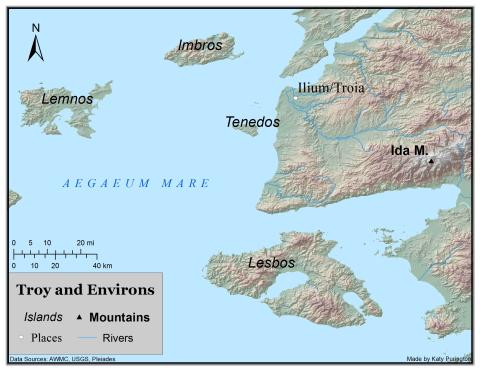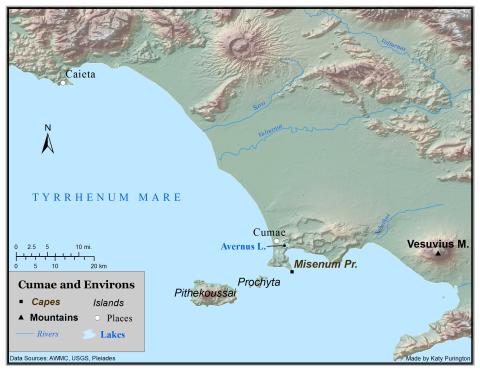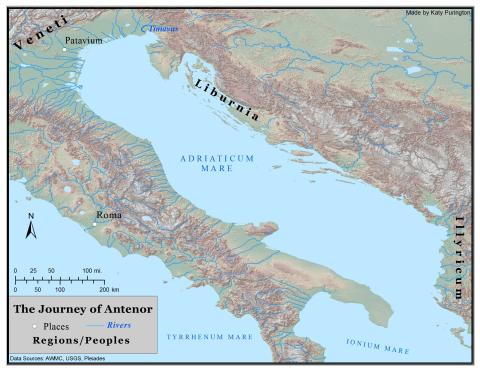Troy and Environs
Annotations
Troy was situated in a strategically valuable piece of land between the Mediterranean Sea and the Black Sea. It was the site of the most famous war in Greek and Roman mythology, the Trojan War. It is the place from which Aeneas starts his journey. Aeneas and a group of Trojans leave the city when the Greeks, enemies of the Trojans, finally breech the walls and sack the city after years of siege warfare. Also known as Ilium and Pergamum.
Ancient coastline and elevation data supplied by the Ancient World Mapping Center.






Aeneid 2.21-22
Est in cōnspectū Tenedos, nōtissima fāmā
īnsula, dīves opum Priamī dum rēgna manēbant,
Aeneid 2.203-205
Ecce autem geminī ā Tenedō tranquilla per alta
(horrēscō referēns) immēnsīs orbibus anguēs
incumbunt pelagō pariterque ad lītora tendunt;
Aeneid 2.254-256
Et iam Argīva phalānx īnstrūctīs nāvibus ībat
ā Tenedō tacitae per amīca silentia lūnae
lītora nōta petēns, flammās cum rēgia puppis